Nederlandse Modelbouw en Luchtvaartsite
Dutch Modelling and Aviation
Fokker D.III
History
The Fokker D.III, Fokker designation M-19, was a direct development of the Fokker D.I, (Fokker designation M-17) and the Fokker D.II, (Fokker designation M.18).
These aircraft were designed by the chief designer Martin Kreuzer. Kreuzer was killed in a crash in june 1916 after a test flight with a Fokker D.I. He was succeeded by Reinhold Platz.
An explanation of the German designation at that time: First the name of the factory, than the type and type number, separated by a dot. So the official designation is in fact Fokker D.III; so naming like Fokker D-3, D-III etcetera are, from a historical point of view, incorrect.
The Fokker M.19 was in fact a modified Fokker D.II, equipped with an Oberursel U.3 engine, rated 160 hp and a wing area of 20 m2 . The Fokker D.I and Fokker D.II had a wing area of 22 m2 and 18 m2 respectively.
Initial the D.III was not equipped with ailerons. These early type D.III were designated M.19F (Flächenverwindung). Later the M.19 was modified with ailerons, which improved its manageability. This improved version was designated M.19K (Klappenverwindung). Most of the Fokkers D.III buyilt were of this latter type.
The Fokker D.III had a much better performance than it predecessors.
In September 1916 the well known German pilot Boelcke received a Fokker D.III. Initially he was very satisfied with the aircraft. He triumphed six times with the machine.
He noted soon that the aircraft was more sluggish than the Sopwith and much slower than the Nieuport Scout.
This caused him to replaced the aircraft with the faster Albatros D.I.
The D.III was withdrawn from the front and only used at home defence.
Several sources state that the Oberursel engine was an unreliable engine. Frits Gerdessen is not sure about this and states that merely the availability of this engine was a problem because of production capacity.
| Dimensions: | |||
| Length: | 6,3 m | Wingspan: | 9,05 m |
| Height: | 2,25 m | Wing area: | 20 m2 |
| Weights: | |||
| Empty weight: | 452 kg | Max. start weight: | 710 kg |
| Performances: | |||
| Max. speed: | 160 km/u | Climbing speed: | - m/min |
| Cruising speed: | - km/u | ||
| Range: | 220 km | Service ceiling: | 4725 m |
| Miscellaneous: | |||
| Engine type: | 1 Oberursel U.3 van 160 pk | ||
| Crew: | One aviator | ||
| Armament: | Twee 7,9 mm Spandau LMG 08/15 mitrailleurs | ||
Summer 1917 the Netherlands were able to buy aircraft in Germany. It happened to be the Fokker D.III. An example of the M.19K, was tested at Adlershof, Berlin by Versteegh and Duinker.
The aircraft was adapted and an order of ten aircraft was done. These were delivered in October 19 117 at air base Soesterberg. It was the 2nd Fokker-type entering LVA service.
The first Fokker aircraft in Dutch military service was the Fokker A.I (M.8) A20/16, interned September 8, 1916.
The armament of two MG 08, 7,9 mm machine guns was not added.(via F. Gerdessen; MG = MG 08; see: Fokker Flugzeugwerke in Deutschland 1912-1921, by Peter M. Grosz & Dr. Volker Koos.)

Fokker D.III 1619/16 at Soesterberg.
[Enclosed photo from BeeldBank NIMH. Click on photo for ordering information]
[Enclosed photo from BeeldBank NIMH. Click on photo for ordering information]
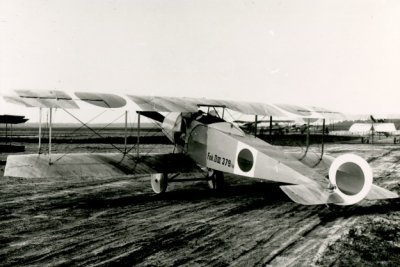
Fokker D.III of the LVA.
[Enclosed photo from BeeldBank NIMH. Click on photo for ordering information]
[Enclosed photo from BeeldBank NIMH. Click on photo for ordering information]

Fokker D.III of the LVA.
[Enclosed photo from BeeldBank NIMH. Click on photo for ordering information]
[Enclosed photo from BeeldBank NIMH. Click on photo for ordering information]
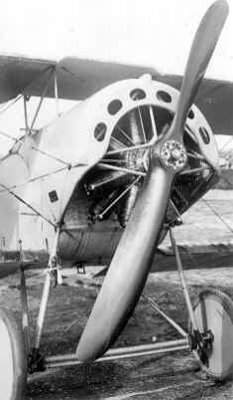
Engine Fokker D.III 1619/16 at Soesterberg.
[Enclosed photo from BeeldBank NIMH. Click on photo for ordering information]
[Enclosed photo from BeeldBank NIMH. Click on photo for ordering information]
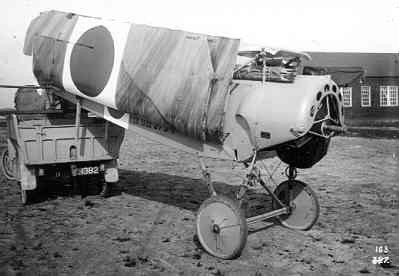
Fokker D.III 379/16, with orange markings at Soesterberg.
[Enclosed photo from BeeldBank NIMH. Click on photo for ordering information]
[Enclosed photo from BeeldBank NIMH. Click on photo for ordering information]
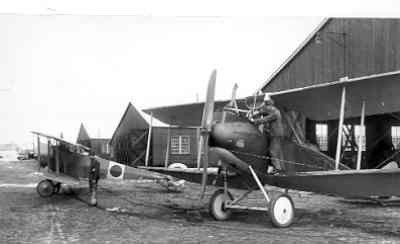
Rumpler C.VIII and a Fokker D.III at Soesterberg.
[Enclosed photo from BeeldBank NIMH. Click on photo for ordering information]
[Enclosed photo from BeeldBank NIMH. Click on photo for ordering information]

Fokker D.III F203 at Schiphol. Note the (red?) painted front of the fuselage).
[Enclosed photo from BeeldBank NIMH. Click on photo for ordering information]
[Enclosed photo from BeeldBank NIMH. Click on photo for ordering information]
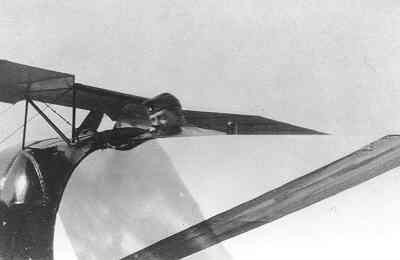
Fokker D.III F203 at Schiphol with mechanic Dirk van Rijn in the cockpit.
[Enclosed photo from BeeldBank NIMH. Click on photo for ordering information]
[Enclosed photo from BeeldBank NIMH. Click on photo for ordering information]
| (Possbible) Serial |
Werknr. | Bestellnr. | Date in service | Date out of service | Notes |
|---|---|---|---|---|---|
| F200 | 350/16 | 700 | 01-10-1917 | 1921 | This was the prototype. Sent from Schwerin on September 28, 1917; Taken over at Adlershof and revised at Schwerin. |
| F201 | 379/16 | 666 | 01-10-1917 | 1921 | Sent from Schwerin on September 28, 1917; Taken over at Adlershof and revised at Schwerin |
| F202 | 1607/16 | 994 | 01-10-1917 | 1921 | Sent from Schwerin on September 28, 1917; Taken over at Adlershof and revised at Schwerin |
| F203 | 1619/16 | 1007 | 01-10-1917 | 1921 | Sent from Schwerin on September 28, 1917; Taken over at Adlershof and revised at Schwerin |
| F204 | 2965/16 | 1335 | 01-10-1917 | 1921 | Taken over at Grossenhain |
| F205 | 2983/16 | 1353 | 01-10-1917 | 1921 | Taken over at Grossenhain |
| F206 | 3022/16 | 1392 | 01-10-1917 | 1921 | Taken over at Grossenhain |
| F207 | 3024/16 | 1394 | 01-10-1917 | 1921 | Taken over at Grossenhain |
| F207 | 3026/16 | 1396 | 01-10-1917 | 1921 | Taken over at Grossenhain |
| F208 | 3028/16 | 1398 | 01-10-1917 | 1921 | Taken over at Grossenhain |
| F209 | 2965/16 | 1335 | 01-10-1917 | 1921 | Taken over at Grossenhain |
Scale 1/72
- HR Models
- Kit 720XX: a resin model of a Fokker D.III late (with ailerons)
- Kit 72014: a resin model of a Fokker D.III, early.
- Kit 72066: a resin model of a Fokker DIII Ailerons
Modelling add-on
- --
- Set --: --
Decals
- --
- Set --: --
Scale 1/48
- --
- Kit --: --
Modelling add-on
- --
- Set --: --
Decals
- --
- Set --: --
The aircraft had the Orange Dutch markings applied on a white rectangle. It was painted overall turquoise blue with a brownish varnish applied over it.
Compare this with photos of the original aircraft.
| Scheme | Colour name | FS number | WEM | Humbrol | XtraColor | Vallejo Model Color | Vallejo Model Air | |
|---|---|---|---|---|---|---|---|---|
| Standard #1 | Overall | Turquoise Blue | ~5299 | |||||
Check www.paint4models.com for an extensive conversion table with lots of colour and paint systems.
Literature.
| Militaire Luchtvaart in Nederlandsch-Indië in beeld. Deel 1 | Hugo Hooftman | Pag. 56 - 61 | 1978 | Uitgever: Europese Bibliotheek, Zaltbommel |
| Fokker, Bouwer aan de wereldluchtvaart | Thijs Postma | Pag. 59 | 1979 | Uitgever: Unieboek b.v., Houten |
| De Nederlandse Vliegtuigen: Alle vliegtuigen ooit in Nederland ontworpen en gebouwd | Theo Wesselink & Thijs Postma | Pag. 29 | 1982 | Uitgever: Romen Luchtvaart, Haarlem |
| 40 Jaar luchtvaart in Indië | Gerard Casius & Thijs Postma | Pag. 22 - 25 | 1986 | Uitgeverij De Alk, Alkmaar |
| Camouflage en Kentekens | J.Greuter e.a. | 1997 | Bonneville – Bergen (NH) |
Websites.
- LuftFahrt Geschichte.Com: Fokker D.III
- Wikipedia UK: Fokker D.III
- History.ofWar.org: Fokker D.ÏII
- DutchAviation: Fokker D.III
Special thanks to mr F. Gerdessen for procuiding me with all kinds of additional information about the Fokker D.III.

